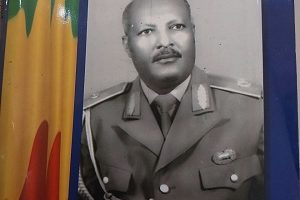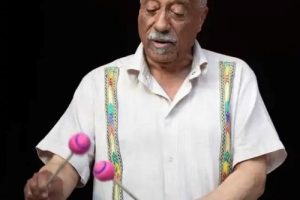
Patriotism and people’s view about it may differ from generation to generation but its existence could be the cornerstone of every culture around the world. Traditionally, the essence of patriotism in Ethiopia has been related to a warrior’s mentality. The legacy of freedom and not being colonized is given to the ancestors who marched from all corners of the Country all the way to the north, to have fought a one day battle and shape the future of a victorious country. That was during the battle of Adwa, where the multi- ethnic Ethiopian patriotism was born and grown up through generations as a culture. However, some argue that the patriotic history and legacy has been given to certain leaders of specific ethnic groups from the north and the narrative has always been the same. There are also people or scholars who argue that through time the traditional narrative of patriotic history has magnified the deeds of some ethnic groups and covered others while the history was known to be done with harmony.
Ethiopia could be an ancient Country with ancient historical and cultural heritages but the traditions of recording written history at some point or level seem to be biased and abandoned by the people in charge of documenting it. This must have resulted in the dominance of a history that develops the upper contribution narrative of history for some ethnic group. Recording history in a country where prolonged wars of warlords and regimes being biased may not be surprizing.
But Countries like Ethiopia, should have known better in terms of keeping its own long lived history of patriotism for some group of the new generation believe the distinction of the documentation of history has caused a lot of misery in the Country. For instance The Ethiopian Herald would like to highlight the story of a great patriot from the Oromo ethnic group but had been only a history, which should have been on a movie, as some Ethiopians said so.
Some two years ago Minas Halefom was on his way from Piasa to Addisu Gebeya while he heard this amazing story of an Ethiopian patriot Abdisa Aga on a radio in a cab. According to him, he had learned the history of Abdisa Aga in his elementary school classes. But what he had heard on the radio was more detailed and elaborated. He said to the BBC that the Amharic version of his text book has thought him nothing more than a story that Abdisa Aga escaped the prison in Italy through a window.
“The story I have heard on the Radio depicted that Abdisa was taken to Italy as a war prisoner, escaped from the prison in a way that sounds like the movie “prison break” a movie, which the new generation holds so dearly!”
Abdisaga was one of the Ethiopian patriotic symbols whose history sounds like a myth for an external world but a reality in a country that once he had been kept a war prisoner.
Countless Ethiopian mothers and fathers had sacrificed their lives and passed to generations a delicate and strong identity of a patriotic culture. Heroes have had risen and cemented their legacy on a flourishing historical pages, even though the narratives are still controversial.
In 1828 the Italian colonial force tried to subjugate Ethiopia as its part of colony and faced a sever defeat at the battle of Adwa. The war only lasted for a day and the colonial force was defeated. Even the young students in Rome went out on the streets uttering “Viva Menilik” on their own defeat. After years of preparation a Fascist Italian force wanted revenge and came back to Ethiopia with all its full force of land and air fighters carrying bad poisonous gas.
Abdisa Aga was a patriot in a foreign land. His life would have been a movie! He was born in the current Oromia region of Wollega zone in 1911 ETC. when he was twelve his father got arrested in a case of crime he wasn’t involved. Abdisa tried to bring justice for his father but didn’t succeed. The young boy who, had left his sixth grade school looking for justice, lost his father in the process and joined the military force following an arrangement from his uncle who was close to the majesty.
He joined the Ethiopian military force at the age fourteen and efficiently completed the training from the Holeta Academy being a cadet! After two years of his graduation, the Italian fascist force invaded Ethiopia, in order to avenge the defeat of Adwa. Abdisa Aga was said to be sixteen when he started fighting against the Italian troops. In the battle that took place in Wolega of Oromia region, Abdisa Aga had simultaneously took down three Italian war planes with his machine gun. That was when the fascist force tried unsuccessful operation to hunt Abdisa Aga. Abdisa Aga escaped with sixty soldiers who graduated from the Holeta academy. The soldiers joined Ras Emru’s force and fuelled the struggle against fascism.
Meanwhile, Abdisaga was wounded in a battle and captured by enemy forces. He was brought to Addis Ababa and imprisoned. Few days later he would snatch a machine gun from prison guards and escaped. During that period of time, the Italian chief in Addis Ababa Rodolfo Graziani got wounded from a bomb attack by Ethiopian patriots Abrham Deboch and Moges Asgedom. In a revenge the Italian forces led a campaign of massacre which claimed the lives of over 35,000 thousand Ethiopian civilians in one day.
But Abdisa’s patriotic deeds didn’t stop by escaping from prison. Taking cover at Qaliti river bridge, he had ambushed Italian forces who were traveling from Debrezeyit(Bishoftu) to Addis Ababa Lancha for the massacre campaign. This was very disgraceful news for the official in Rome. According to sources the fascist leader in Rome had ordered Ethiopian patriots with glorious deeds to be captured alive and taken to Rome. Abdisa Aga was on the list. After a long tempting search by the Italian forces, Abdisa Aga was found and captured. Then, he was taken to Italy and imprisoned in a prison built on the island of Sicily.
During his time in prison, the patriot didn’t face difficulty in creating good relationships with the prisoners of different nationalities. The prison guards didn’t like his sociability! Even though thoseday in the prison were so tough, Abdisa Aga started plotting an escape plan with his Yugoslavian cellmate. When the ripe time presented himself, he shredded his blanket and made a robe out of it. He got out of the window and climbed down the prison building. Everything was quite that late night when Abdisa Aga crept towards the three guards sleeping, under the main gate, with their rifles in their hands.
Killing all three of the prison guards near the main gate he and his Yugoslavian friend escaped the prison. Later they executed a prison break operation and freed all the prisoners of the island. Abdisaga’s plan wasn’t only freeing the prisoners but also building his own army and fighting against the Fascist Italian forces on their own land. As he continued fighting, World War II broke and the allied force gave material support for his army and he proved stronger and fearsome. When the fascist force was defeated and Rome fell in the hands of the allied force, Abdisa Aga would order his multinational soldiers tie a bandage of the green, yellow, red paint (Ethiopian) bearing flag on their hands and he himself marched to the City waving high the flag. Abdisa Aga’s army received a warm welcome by the allied forces, narrates Minas Halefom on his book with the title ‘Aga’.
Such a glorious life of the patriot hasn’t been well recognized by generations, for the repeatedly changing regimes in Ethiopia bring systems that only glorify their ideologies and history. This could be one tradition Ethiopia has to change, putting in mind that patriots like Abdisa Aga fought for their country and not for their ethnicity.
BY NAOL GIRMA
THE ETHIOPIAN HERALD SATURDAY 6 APRIL 2024





